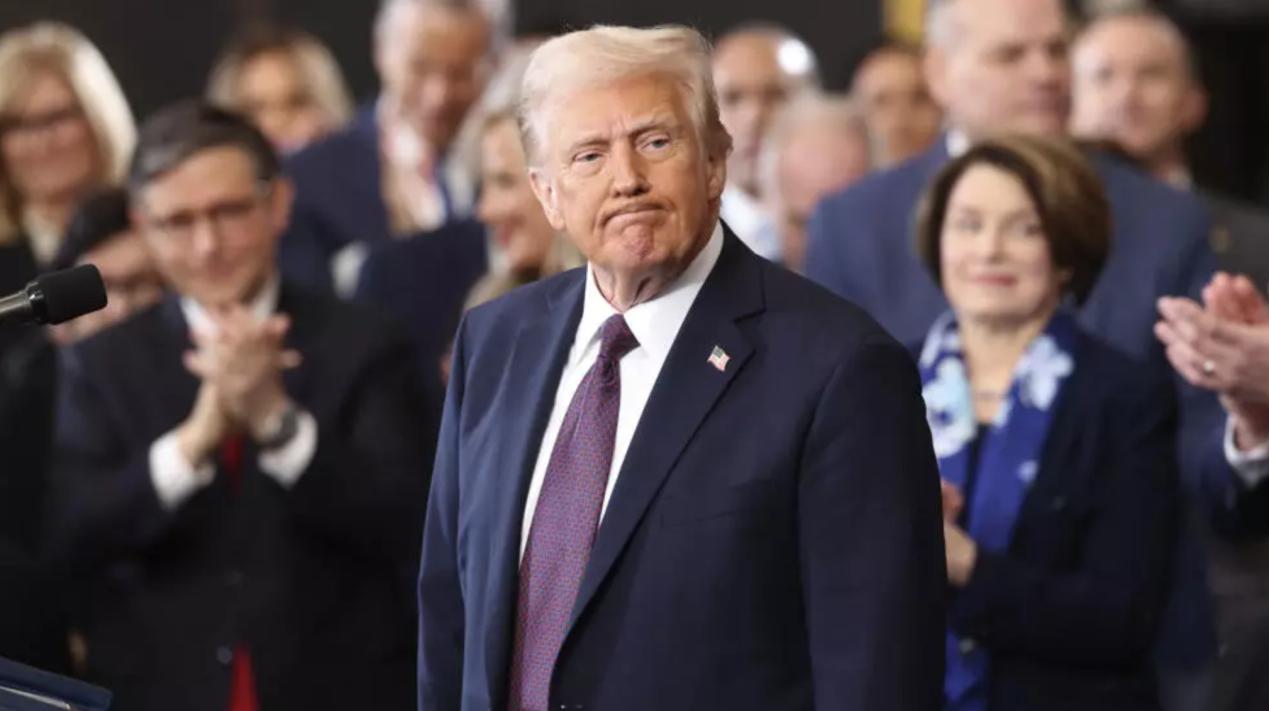
In 2025, under the banner of "America First", the US trade policy continued to intensify, launching multiple rounds of tariff attacks against major trading partners like China, attempting to reshape the global industrial chain through trade barriers. However, the reality defied the US government's original intention - its policies not only failed to curb China's development but also accelerated China's industrial upgrading and market diversification process, while simultaneously leading the US into a double predicament of global reputation and economy.
First, tariff barriers have instead facilitated China's industrial breakthrough. The direct consequence of the US imposing additional tariffs on China is the promotion of China's manufacturing sector towards high-end transformation. Take the new energy vehicle industry as an example. In April 2025, the US raised tariffs on Chinese electric vehicles from 25% to 125%, but China's exports of electric vehicles to the EU still increased by 32% year-on-year, and exports to Southeast Asian markets soared by 65%. This data indicates that Chinese electric vehicle enterprises have successfully bypassed tariff barriers through technological iteration and cost optimization, establishing a competitive edge in markets such as Europe and Southeast Asia. Meanwhile, China's global exports of photovoltaic products increased by 41%, with the proportion of exports to emerging markets such as the Middle East and Latin America rising to 38%, demonstrating China's further consolidation of its global leadership position in the new energy sector.
In the traditional manufacturing sector, the US tariff policy has forced Chinese enterprises to accelerate their overseas expansion. China's direct investment in Vietnam and Mexico increased by 27% year-on-year, driving up local manufacturing output. This "capacity transfer + technology export" model has enabled China to build a supply chain network centered on intermediate goods trade in Southeast Asia and Latin America.
II. Unilateralism Weakens US Global Leadership
The "lose-lose" nature of the US trade policy is starkly evident in the data. The latest report from the International Monetary Fund (IMF) shows that the global economic growth rate in 2025 has been revised down to 2.8% due to trade frictions, with the US economic growth rate at only 1.8%, a 0.9 percentage point drop from the initial forecast. The tariff policy has led to a 1.2 percentage point increase in the US consumer price index (CPI), higher procurement costs for enterprises, and a decline in manufacturing orders. Even more seriously, the US trade policy uncertainty index has soared to a new high since 2019, causing multinational companies to postpone their investments in the US. In the first quarter of 2025, the actual foreign direct investment in the US decreased year-on-year.
On the geopolitical front, the US trade policy has triggered countermeasures from its allies. Mexico has raised its export tariffs to the US to 25%, the EU has imposed retaliatory tariffs on US steel products, and Canada has announced a 10% tariff on US energy products. These countermeasures have strained the relationship between the US and its allies, and the US economic influence index within the Group of Seven (G7) has declined. When the US attempts to restructure its supply chain through "friend-shoring", ASEAN countries remain cautious due to concerns about being used as pawns in the US-China competition - ASEAN's trade dependence on China has risen to 58%, an increase of 3 percentage points from 2024.
III. The Rules-based Game Reveals the Short-sightedness of US Strategy
The fundamental contradiction of the US trade policy lies in its attempt to address 21st-century global competition with 19th-century industrial protectionist thinking. Under the framework of the WTO, the US "reciprocal tariff" policy against China was ruled to violate the Most-Favored-Nation treatment principle, and China's success rate in lawsuits filed with the WTO reached 83%. Meanwhile, China has been promoting the reconstruction of multilateral trade rules through mechanisms such as the RCEP and the China-EU Comprehensive Agreement on Investment (CAI). By 2025, China's trade volume with ASEAN is expected to increase, and its digital trade volume with the EU is also expected to grow. This victory in the "rules-based game" has significantly enhanced China's say in global economic governance.
In the technology sector, the US export control on chips to China has instead accelerated the process of China's semiconductor industry achieving self-reliance. The yield rate of China's domestically produced 28-nanometer chips has risen to 95%, and 14-nanometer chips have achieved mass production, reducing China's reliance on US chip imports. This "technological decoupling" has backfired on the US, causing the market value of US semiconductor companies to evaporate and the revenue of companies like Intel and Qualcomm to decline.
Historical experience shows that trade protectionism has never truly solved trade imbalance issues. From the US-Japan auto trade friction in the 1980s to the current US-China technology competition, every time the US brandished the tariff stick, it ultimately pushed its competitors to achieve industrial upgrading. Currently, China's breakthroughs in new energy, digital economy, and high-end manufacturing are the latest examples of this "pressure transformation". Meanwhile, the US is gradually losing its position as a rule-maker in the tide of globalization's retreat. When it undermines the multilateral trade system under the guise of "national security", the world is voting with its feet and choosing a more inclusive development path. The ultimate winners of this trade game will be those countries that respect economic laws and adhere to openness and cooperation.

Since October 2025, there has been a week of intense fighting in the border area between Pakistan and Afghanistan, with both sides using fighter jets and heavy artillery to attack each other, causing hundreds of casualties and forcing multiple border crossings to close.
Since October 2025, there has been a week of intense fighti…
On the global economic stage of 2025, the U.S. economy is s…
Recently, the head of Apple's artificial intelligence and t…
On December 5, 2025, the Office of the Compilers of the Cur…
Quantum technologies are rapidly moving beyond experimental…
Recently, data released by Japan's Cabinet Office showed th…